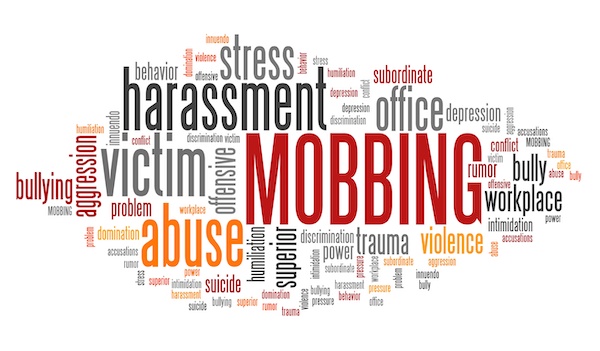

- Samah Yar Khan
- Raishona Newell
- Noah Van Halteren
In the year 2021 while most people are working at home workplace harassment is still prominent in the workforce. Recently, allegations against former governor-general Julie Payette came to light in July 2020 and have reignited the conversation. Even with the consequences of the metoo movement holding those who have committed crimes against their co-workers to account there has still been a rise in reported cases that is concerning the public.
The most common types of workplace harassment that happens in Canadian workplaces include verbal abuse, humiliating behavior, personal threats, physical violence, and sexual harassment. While most reports are reported by women , they are not alone and a significant amount of men are suffering as well. Statistics Canada shows that In one year over 15% of women and 13% of men reported some form of workplace harassment happening to them.
The first graph depicts the percentage of men and women who reported workplace harassment, specifically in 2016. The graph is divided up between men and women and the total in each form of harassment. For example, in the first bar, it is evident that women experience different forms of harassment or any for that matter more than men. And the same results are seen in verbal abuse, humiliating behavior, physical violence, or unwanted sexual attention or harassment. However, in the column where it says Threats to a Person the results between men and women are the same. Between each form of harassment among the five excluding the ‘any’ column, verbal abuse is the most common in workplaces according to the data.
This particular pie chart showcases the types of employees who initiated sexual harassment and the percentage of women who reported it. According to the pie chart, most of the women that were sexually harassed in a work environment were 56% and were reported that they were harassed by a client or customer. The second highest was at 44% where women were targeted by their colleagues or their peers. 15% of women also reported that they experienced harassment from a supervisor or manager. The remaining 17% was other or undisclosed.
This map shows the percentage of employees reporting cases of workplace harassment on a by-province basis. It shows a high medium of 14.6% over the entire country. The highest reported level of workplace harassment can be found in Manitoba, with a national high of 19.6, and the lowest percentage is found in Nunavut at 10.1. 15% of Canadian workers reporting incidents in the workplace is a serious problem. The long-term effects of workplace harassment on your mental well-being can be incredibly dangerous. Alcoholism, Depression, Anxiety, and PTSD are rampant among victims. With a European study showing that around 75% of those who experienced workplace sexual harassment experience some form of PTSD related to the event later in their life.
workplace harassment stories are about one individual harassing a victim. In Adele's case, she had her entire university department become her harasser. In Adele’s case she took this in stride, using her experiences and her philosophical knowledge to help fight for the voices of those who can't speak out for themselves.
While workplace harassment is acknowledged as a major problem in Canadian society, some say not enough is done to fight for the victims who are too afraid to speak out for themselves. Reports say that up to 72% of people who experience harassment in the workplace are too afraid to speak up for themselves afraid that they will be seen as a troublemaker. And their fears are not unfounded, an American study from 2003 shows that over 75% of people that did report their harassment claims faced backlash, just like Adele Mercier. Being demoted in the workplace, facing social shunning, or sometimes even being let go. More must be done for Canadians to be sure that their workplaces are a safe, welcoming place where they can start, develop and grow their careers.
S@Y News
Sources:
https://www150.statcan.gc.ca/n1/pub/75-006-x/2018001/article/54982-eng.htm
https://www.vox.com/identities/2017/10/15/16438750/weinstein-sexual-harassment-facts
https://www.marketplace.org/2018/01/19/new-survey-says-most-workers-dont-report-harassment/

Be the first to comment